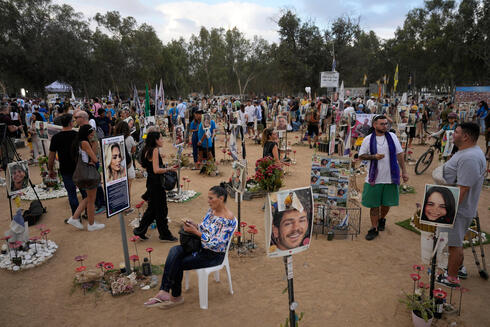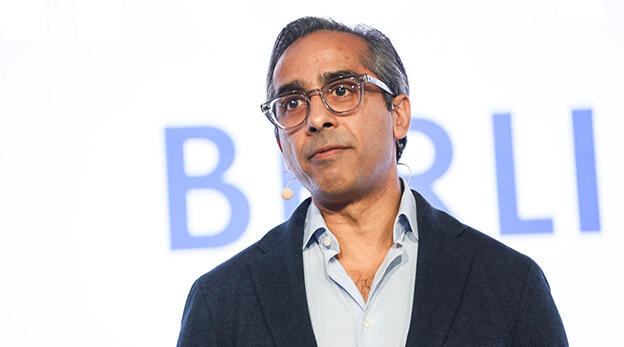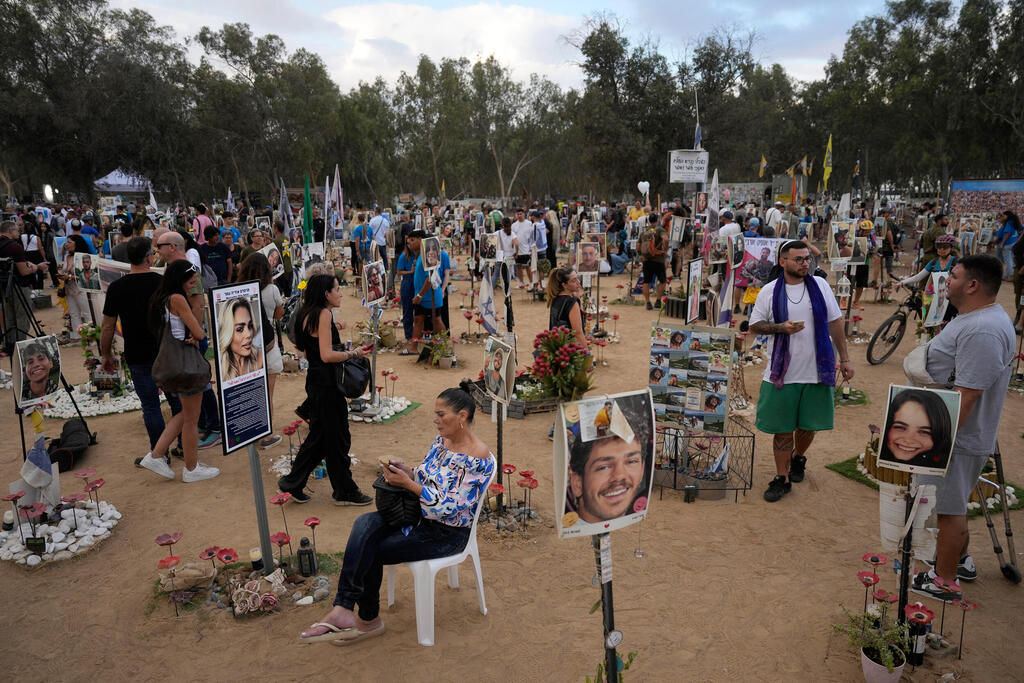
October 7 and the collapse of digital permanence
From Netflix removals to WhatsApp archives, the war’s memory may depend on who hits “save”—and who hits “delete”.
How will the October 7 war be remembered in Israeli and global memory? In an era where the internet seems to record everything, new questions suddenly arise: What testimonies and documents will remain available in archives decades from now? And how will the stories—both from Israel and Gaza—be written in a way that does justice not only to the victors?
Many are already calling this conflict “the first social media war,” but a closer look at the chaotic events following October 7, 2023, reveals that digital memory is far from flawless. It is frequently shaped—knowingly or unknowingly—by political, social, and economic forces that lead to the deletion, alteration, or concealment of information.
"The most unique documentation of the war is WhatsApp," says Dr. Hezi Amiur of the National Library, distilling the challenge of preserving war memory in a single sentence. Gone are the days of digging through physical archives and microfilms awaiting exposure 50 years later. In their place is a sprawling and seemingly accessible digital memory—but one that is far from comprehensive or permanent. Traditional archives, once the hallmark of historical scholarship, are now giving way to digital platforms and continuous data collection, which may appear automatic and exhaustive but are, in practice, fragmented and vulnerable. It is now clear that the internet, despite its reputation for remembering everything, is in fact selective, fragile, and sometimes even vanishing. We must prepare ourselves—and future generations—for a new kind of historical record: one shaped by the fragile nature of social networks.
1. Creating a snapshot of web time
To understand the danger of an incomplete digital history, one need only examine the cyberattack on the Internet Archive in October. The Internet Archive, an American nonprofit operating since 1996, manages the world’s most ambitious digital preservation project: it has collected 866 billion web pages, 44 million books, and 10.6 million film and television clips. The hack brought the archive down for several days and exposed the personal data of more than 30 million users.
The attackers, a group of hackers affiliated with anti-Zionist elements, claimed their goal was to “cause significant losses to countries that serve Satan and the global Zionist regime.” Their linking of the Internet Archive with Israel may seem puzzling, but it contains a kernel of truth. “The Internet Archive supports online documentation of Israel,” says Amiur, who oversees the National Digital Library. “It harvests Israeli web content to create a relatively comprehensive record of our digital presence.”
But the Internet Archive is vulnerable—not only to cyberattacks, but also to lawsuits and a more existential threat: the possibility that one day it will be unable to raise enough money to continue operating. Yet despite these risks, the National Library of Israel—which is legally required to collect all Hebrew publications—relies heavily on the Internet Archive to conduct annual, periodic, and one-time web harvests (such as during election seasons) of predefined Israeli websites. These harvests are carried out by a web crawler that systematically creates a “frozen” snapshot of selected sites, preserving Israel’s digital heritage.
However, even this effort is flawed, notes Dr. Anat Ben-David, a digital media researcher at the Open University. “It’s very difficult to conduct historical research using such documentation. It spans too many sectors—banks, universities, government offices, tourism sites—and it happens over a six-month period. The result is a lack of temporal consistency, and critical moments may be missed.” In other words, just when we most need accurate records, vital details can vanish from the historical record.
Since the war began, the National Library has intensified its documentation efforts to better capture the speed and scale of online discourse. “In times of crisis, documentation needs to be more frequent and accurate,” says Amiur. “We’re collecting more content from news sites, social media, and the profiles of public figures. We’re also aware of the need to preserve texts and media shared in WhatsApp groups from kibbutzim and the Nova festival, as well as from community networks formed after the attack. We’ve launched a dedicated project to collect this material—but at this stage, due to privacy concerns, it won’t be made available to the public.”
2. History is only documented by the victors
While Israel is conducting meticulous digital documentation, the situation in Gaza is dramatically different. Communication networks there frequently collapse and are sometimes deliberately disabled by Israel, making real-time documentation nearly impossible. Without a local archival institution and in the absence of international involvement, a significant documentation gap has emerged between Israeli and Palestinian narratives.
“The National Library also archives content from Judea and Samaria, the Palestinian Authority, and Gaza,” Amiur clarifies. “It also includes broader Middle Eastern material.” Still, the volume and quality of documentation from the Palestinian territories is nowhere near Israel’s level—and rightly so, he says, since Israel is not responsible for documenting that history. The result, however, is a deeply uneven historical record. While the Israeli side is preserved in detail, the Gazan story remains fragmented, underrepresented, and potentially lost. Whole chapters of history may vanish, and what remains could be one-sided or misleading.
According to Dr. Ben-David, the current war reveals just how politically charged and sensitive the act of digital documentation can be. “Unlike the systematic global efforts to archive the COVID-19 pandemic or the Russia-Ukraine war, in this case, there’s been a striking reluctance to engage. How do you build an archive for such a war? Whose perspective should dominate? Will the archive reflect the Israeli side? Who will be responsible for documenting the Palestinian narrative, and who will fund it? My sense is that this reluctance has led to a situation where, in practice, no comprehensive documentation has been undertaken.”
3. The internet disappears
As events continue to unfold on both sides of the border, it becomes increasingly clear just how fragile and vulnerable the internet truly is—despite its illusion of permanence. A striking example occurred in October, when Netflix removed the “Palestinian Stories” collection—a curated set of 32 feature films and documentaries that had been available on the platform for three years. The move triggered a social media outcry, with many users interpreting it as a deliberate attempt to silence or even erase Palestinian voices from the digital landscape. “Israel is already trying to erase the Palestinians in Gaza and the West Bank,” one user wrote in a viral post. “Why is Netflix also deleting Palestinian work from its platform?” For these users, removing the films was tantamount to deleting people—the erasure of an entire narrative. Netflix, for its part, responded that this was a routine case of rights expiration.
The Netflix controversy reflects a widespread but misguided belief: that everything on the internet lasts forever, and that when something disappears, it must have been for political reasons. The reality is far more complex. The internet is not permanent. At any given moment, countless pieces of content are being deleted or simply vanishing. A study published last summer found that 25% of all websites that existed in 2013 are no longer accessible today. This loss isn’t necessarily due to censorship or malice—but more often to the relentless passage of time and the fading of relevance.
“UNESCO calls the period we’re living in the ‘digital Middle Ages,’” explains Dr. Anat Ben-David. “The organization compares our era to the original Middle Ages—a period sometimes called ‘dark,’ not because nothing important happened, but because so few primary sources survived. Everything was burned, lost, or erased. Today, we live in the illusion of an infinite present, flooded with endless information. But in reality, we’re a society that may not leave behind a history at all.”
From this reality, an urgent question arises: How will the events that occurred in the Gaza Strip, in the communities near the border, or in IDF command centers be remembered? Who will decide which stories and materials are preserved—and which are lost in the flood of social media posts and online updates? According to Ben-David, there is no simple answer: “Each memory institution has its own preservation policy, shaped by its resources, legal constraints, and institutional decisions—like how many sites to preserve and how often. Wealthy, industrialized countries in Europe and the U.S. tend to safeguard their digital memory in a systematic way. In other regions—like the Middle East—there is often no one to do this work. That creates a huge gap between the Global North and the Global South.”
Into this gap step historians, technologists, and archivists who are now seeking ways to build more diverse, equitable, and balanced digital archives. One of their biggest challenges is enabling communities to preserve their own memories—especially when no national policy exists to help them do so. But less-organized efforts are inherently limited, and because preservation requires significant financial resources, every decision to prioritize one type of documentation over another becomes political by nature.
4. The spirit of librarians
Every Israeli citizen—and, more broadly, anyone who hopes to understand the October 7 war in depth—should be concerned about the possibility that the digital history of this period will be incomplete. Beyond the official documentation efforts of state institutions, it is the everyday content—WhatsApp messages, social media posts, short videos—that has shaped public discourse and had a profound effect on collective memory. Are libraries and archives in Israel and around the world prepared for this task?
“That rolling historical document we call ‘public discourse on the internet’—almost nothing of it will remain,” says Ben-David. “It’s unfortunate, because we won’t know what mattered to the people who lived through this period—what they talked about, what they read, what they chose to share. This is partly because social networks impose enormous legal and technical obstacles that prevent systematic preservation of public digital history. It’s a global issue. Even national libraries, which have a legal mandate to preserve a country’s digital cultural heritage, are constrained by the platforms’ terms of use. As a result, a nation’s digital culture doesn’t truly belong to the nation—it belongs to the platform where it was created.”
In an age where information is created and deleted in real time, the old saying “history is written by the victors” takes on a new dimension: in the digital world, the narrative is shaped not only by those who prevail militarily—but also by those who manage to preserve and control the information over time.
The implication is clear: in a war where consciousness itself is a battlefield, the digital arena may be the most sensitive and vulnerable of all. Who will decide which events are important enough to preserve—and which will be quietly erased? Who will safeguard this information against manipulation, censorship, or simple loss? The battle over documentation is already underway. Without strong, independent, and impartial preservation institutions, the version of history that survives could be incomplete or distorted. “Are we the guardians of our own history—or the guardians of history in general?” Ben-David asks.
The October 2023 war did not just reshape political and military realities—it also revealed how difficult it is to preserve our digital present in a reliable way. The common belief that “the internet remembers everything” has proven to be a myth. In reality, billions of pieces of data appear and vanish every moment. Some are carefully archived—but many more are erased without a trace. Anyone trying to understand this war in the future will discover that our digital record rests on shaky foundations: hacked archives, deleted content, and government restrictions on access to information.
5. The future
Anyone seeking to understand the October 7 war in the future will encounter significant gaps in documentation—some accidental, others intentional. They will confront a world in which memory is shaped by a continuous tug-of-war: between those who want to reveal and those who want to conceal; between those preserving the truth and those manipulating it for political or ideological gain.
The digital space, which became a central battleground during the war, has also revealed a profound new reality: today, nearly everyone is both a witness and a documenter. But this democratization of memory has also made preservation more complex than ever. While future historians will have access to thousands of hours of TikTok videos, testimonies on Instagram, and tweets from X (formerly Twitter), they will also face the hard truth that much of this content is removed by commercial platforms based on opaque economic or political considerations.
Beyond that, the key questions surrounding the legacy of October 2023 are not just historical—they are political and ethical: Who decides what is worth preserving? Who pays for the infrastructure to collect and store these materials? And how can the integrity of archives be maintained when the data itself is so susceptible to tampering?
Ultimately, the historical memory of the October 7 war will depend on those institutions—libraries, archives, and civil society actors—that take on the responsibility of safeguarding memory. They will face not only technical and legal challenges but also efforts to censor, spin, or rewrite the past. In a war where information and awareness are part of the conflict itself, it’s not enough to win on the battlefield. To shape the future, one must also control the memory of the present.















